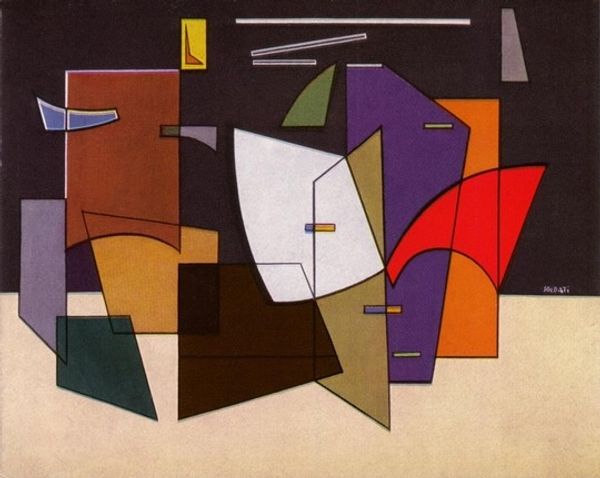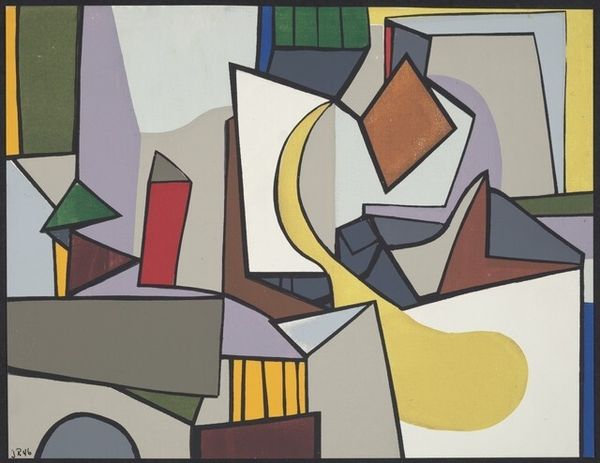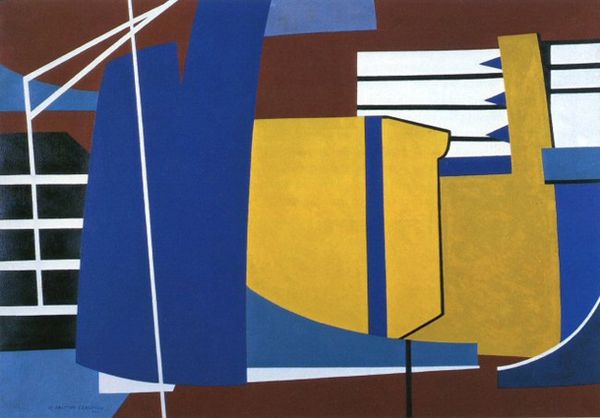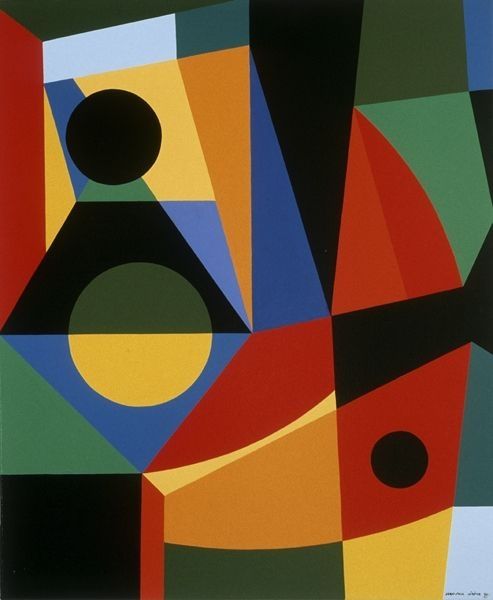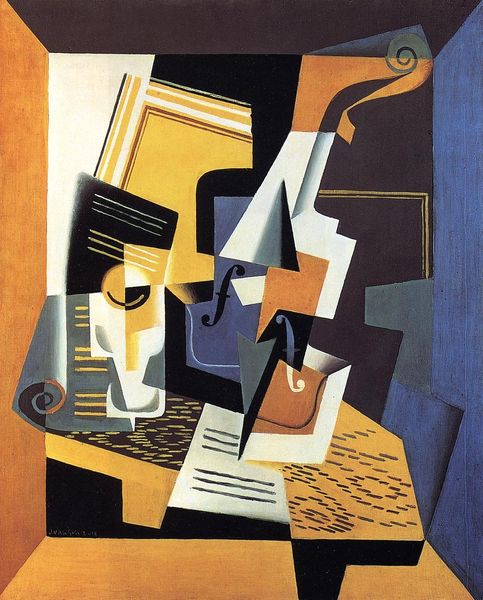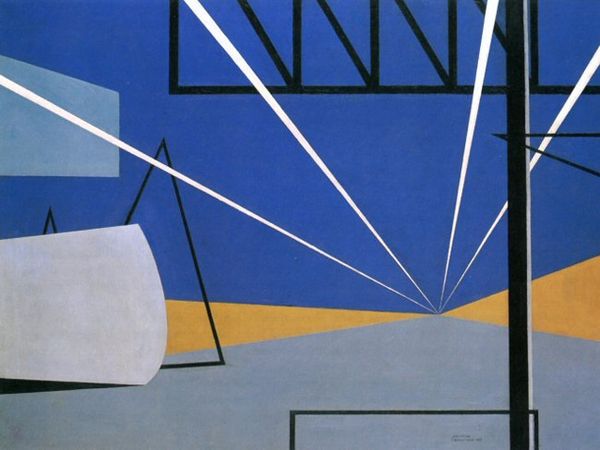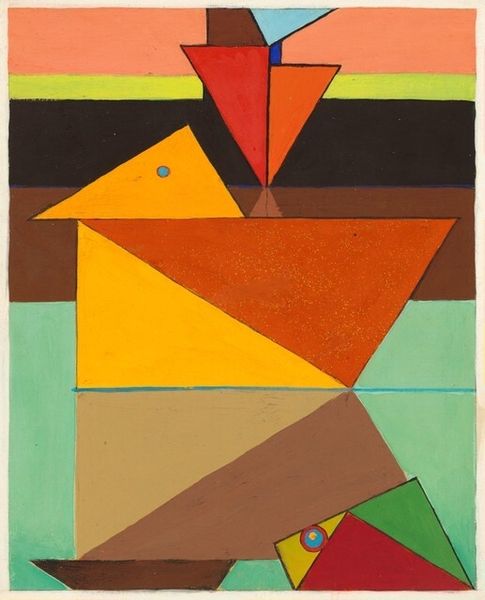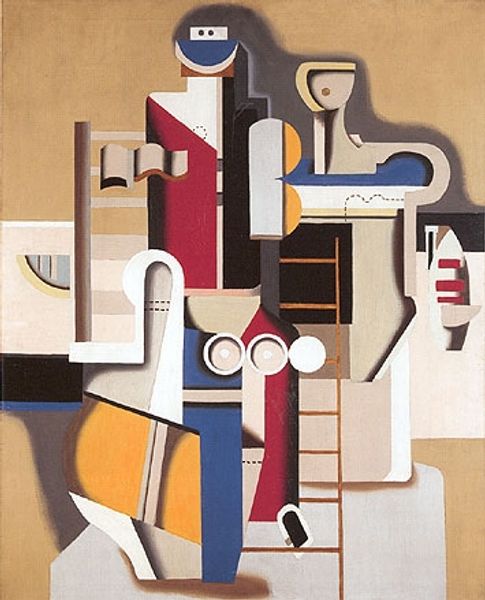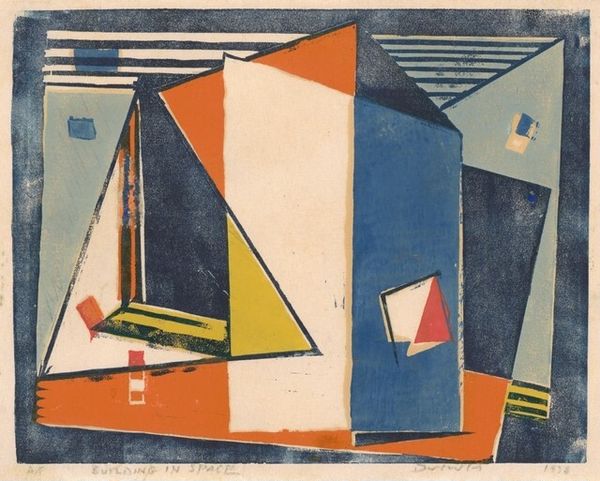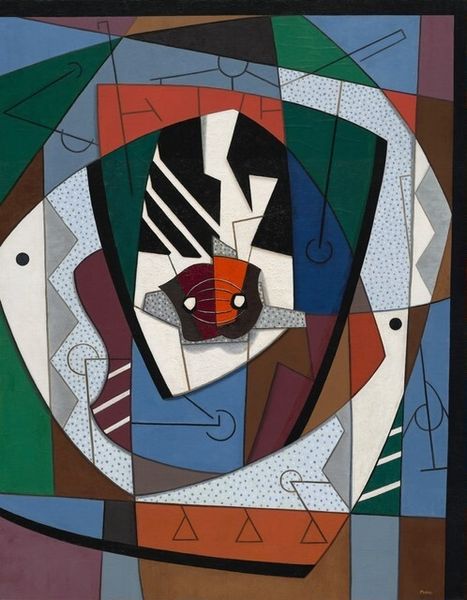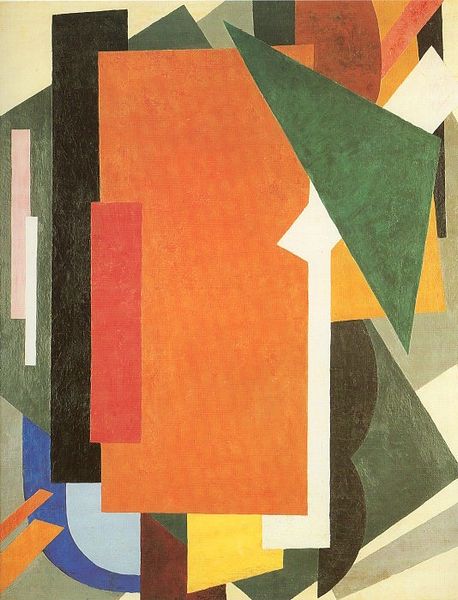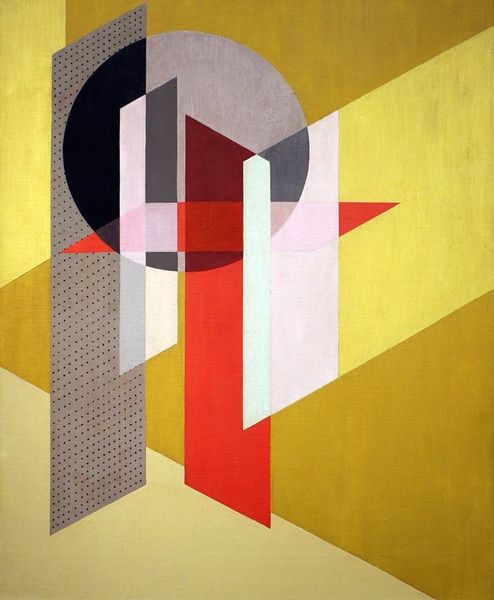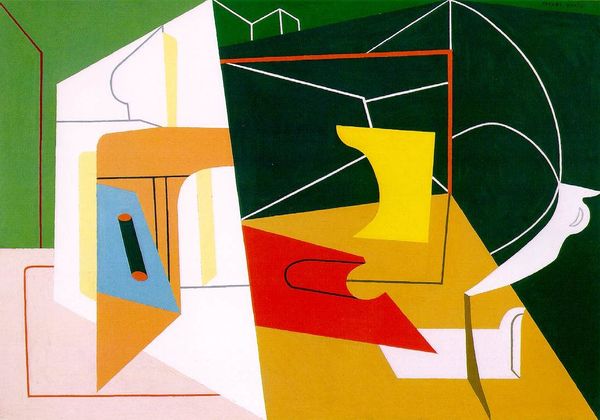
painting, acrylic-paint
#
abstract painting
#
painting
#
geometric composition
#
acrylic-paint
#
geometric
#
geometric-abstraction
#
modernism
Copyright: Atanasio Soldati,Fair Use
Curator: Here we have Atanasio Soldati’s "Composizione" from 1952, an acrylic-on-canvas piece firmly rooted in geometric abstraction and the broader Modernist movement. Editor: My first impression? Organized chaos. All those shapes vying for attention, bumping into each other on this almost…sepia-toned stage. It's playful but also feels…constructed, a little like peering into the blueprints of a cubist city. Curator: That's an insightful take. Soldati was a key figure in Italian abstract art, particularly active in the Concrete Art movement. What you see as playful is actually deeply considered geometry. Composition was an experiment that deliberately avoids any recognizable forms or narrative. Editor: I suppose so, but even the absence of narrative can become its own story, can’t it? I keep seeing things, little glimpses of houses, arrows, even the suggestion of a human form trying to break free. Or maybe my mind is playing tricks on me. Curator: Soldati's work can certainly invite projection. He presents us with a puzzle, encouraging viewers to decipher a potential system. Geometric art isn’t simply about decoration, it is also rooted in an early 20th-century Utopian project attempting to purify culture through forms. Editor: Purify? That's interesting... almost sterile sounding, compared to how alive it feels to look at it. Like someone tried to freeze a spontaneous dance. It's both strangely calming and energizing. And it invites speculation. Why did he choose these colors, these placements, what kind of feeling was he trying to extract, not express... I want to know. Curator: Those colours...that palette echoes the post-war period in Europe when artists gravitated towards abstraction to represent changing societal ideas and political instability, a world attempting to reconstruct itself with rigid organization and forward focus. Editor: Maybe he just wanted to stir us up a little bit, make us question what we see, what we think we know. Makes a guy appreciate the beautiful messiness of everyday life, even if that everyday life can seem chaotic, too. Curator: Indeed. Soldati presents a dialogue between form and feeling. I leave now, understanding much more of what abstraction can provoke, a controlled dialogue of elements designed to offer some kind of alternative reality or thoughtspace. Editor: For me, this piece hums. There is tension and space that's just... alive. It might be manufactured on some level, but there is spirit at work somewhere in here, and I'm still listening for what it has to say.
Comments
No comments
Be the first to comment and join the conversation on the ultimate creative platform.
